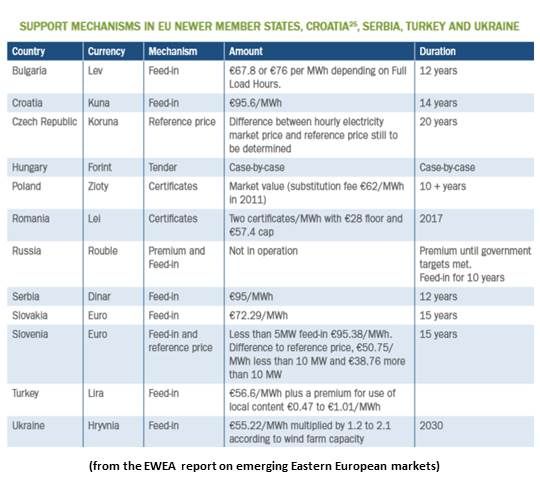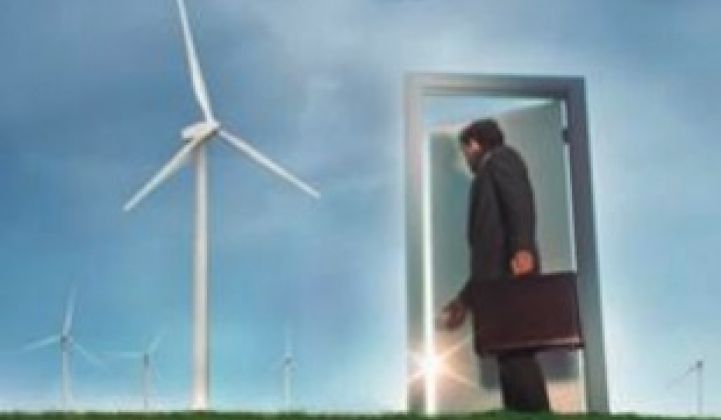There is surprisingly good news for the wind industry from Europe’s annual conclave on wind power in Vienna.
“The big story is emerging markets,” reported GTM CEO Scott Clavenna from EWEA 2013.
With the European financial crisis hanging over the continent and a PTC-driven lull in U.S. wind activity, European Wind Energy Association (EWEA) President Arthouros Zervos warned of the worst.
"The wind industry is suffering serious job losses, and will suffer more difficulties this year," Zervos said. "The year ahead will be tough."
But, Clavenna observed, EWEA’s report Eastern Winds: Emerging European Wind Power Markets is generating excitement.
“Central, Eastern and Southeastern Europe is Europe’s new wind energy frontier,” according to the report. “Significant growth, opportunity and benefits can be expected from and for the region.”
More importantly, the report added, “these new markets look set to offset, to a greater or lesser extent, declines in the near future in some of the more mature southern European markets.”
The biggest turbine manufacturers and developers, such as GE (NYSE:GE), Vestas (PINK:VWDRY), and EDF (EPA:EDF), have already been at work in the emerging markets as U.S. and Western Europe prospects faded.

Average installed wind capacity in the twelve newer European Union (EU) member states went from 208 megawatts in 2005 (2 percent of the EU’s annual new capacity market) to 4,200 megawatts in 2011, 12.5 percent of the marketplace, driven by the EU’s binding 2020 renewables targets.
Bulgaria, Czech Republic, Hungary, Poland and Romania have 88 percent of the new EU states’ total installed wind capacity.
The new states’ 6 gigawatts of grid-connected wind power capacity in 2012 is expected to be 16 gigawatts by 2020.
Membership aspirants Croatia, Ukraine, Serbia, and Turkey are also building wind, at least in part, to demonstrate they can meet EU policy targets.
Turkey, with one of the fastest growing electricity generation markets in the world, expects to go from its present 2 gigawatts of installed wind power capacity to 20 gigawatts by 2023.
Though the oil- and gas-fixated Putin government has not yet begun building wind, an International Finance Corporation (IFC) initiative has proposed development in Northwest Russia that could potentially supply thousands of megawatts to the EU.
The IFC, the European Investment Bank (EIB), and the European Bank for Re-Construction and Development (EBRD), along with many EU banks, are comfortable with financing wind and could back plays in the emerging Eastern European markets if they are convinced there is stable, long-term policy to support the investment, according to the EWEA report.
And, the report added, EU Cohesion Funds intended for wind development in the new states -- estimated at €240 million -- remain available to subsidize growth.

The emerging markets’ policy support mechanisms for wind “are diverse in design and effectiveness,” the report said, adding that “where rules are unclear, unpredictable, or frequently changing (sometimes retroactively), wind energy deployment follows boom and bust cycles or does not pick up at all.” The report lists policy recommendations that will drive further growth.
"The wind industry can be a driver for growth, for jobs, and for exports -- but not if government policies drive away investors," Zervos said. He called for "binding renewable energy targets for 2030."




